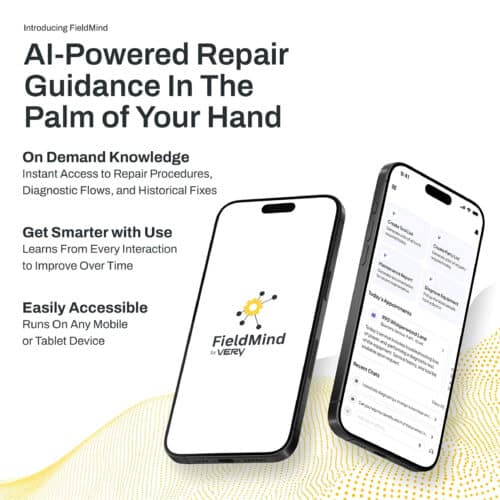BLOG
Connected Products vs Smart Products: What’s the Difference?
According to reporting by MediaPost, 69% of U.S. households have at least one smart home product, and approximately 18% of those households have more than one. While virtual assistants such as Amazon’s Alexa and Apple’s Siri have entered mainstream consciousness, relatively few people could articulate what it means for these devices to be “smart” and not simply “connected.”
“Smart products” and “connected products” often share the same goal of making the user’s life easier (and to make matters worse, the two terms are often used interchangeably). So what exactly is the difference between them, and what are some of their most important applications?
What Are Connected Products?
Strictly speaking, connected products have been around for some time – as long as technology such as the internet has been available to link them up. Devices such as laptops and printers were among the very first to be connected.
However, in modern lingo the term “connected product” primarily refers to a product with a real-world function that’s connected to the internet in order to transmit data or be controlled remotely. The term “Internet of Things” (IoT) is used to describe the massive network of connected devices and systems that collect and exchange data.
From sensors on manufacturing equipment that detect temperature anomalies to toasters that print the weather forecast on your bread, there’s no shortage of connected products/devices, (also known as IoT devices), on the market for consumer and enterprise use. Research firm IoT Analytics reports that the number of connected IoT devices is expected to reach 27 billion by the end of 2025.
What Are Smart Products and Smart Connected Products?
There’s some confusion and debate about what exactly constitutes a “smart product.” Of course, it doesn’t help that manufacturers often label their products “smart” for marketing purposes when there’s nothing particularly intelligent about them.
Although connected products may take some simple actions based on what they detect in the environment, their primary purpose is to send and receive data. Smart products, on the other hand, have some kind of intelligent behavior that enables them to react to real-world situations and even predict the needs of their users.
Smart products often have a much more complex hardware architecture, including things such as sensors, microprocessors, data storage, controls, and embedded operating systems.
Also most smart products are connected to the internet, (although they don’t have to be), which means most are technically “smart connected products” – but not all connected products are smart.
Examples of Smart vs Connected Products
To illustrate the difference between smart and connected products, think about the example of a light switch — perhaps the most basic electrical device possible. Now imagine what you could do with a light switch if it were connected to the internet via a sensor: you could see whether it was on or off, and toggle it remotely from anywhere in the world.
While you could certainly call this light switch a connected product, there’s not very much that’s “smart” about it. For example, if you forget to turn off the lights in your apartment when you leave for work, you still have the mental load of realizing your mistake and manually turning them off.
A “smart” light switch would go beyond simple connectivity, with features designed to make the user’s life easier. Motion-activated light switches can be seen as a type of basic smart product: they turn on and off whenever you enter or leave a room.
Advanced smart products are able to go even further and adapt to the circumstances of individual users. They can even “learn” from experience, understanding your behavior and preferences in order to make your life easier and more efficient.
For example, you might usually not want to turn on the light in the middle of the night because you have a pet that might trigger the motion detector. Sometimes, however, you might want to be awake at night, such as if you have an early morning flight. In these cases, if the light detects a large amount of motion it might decide to turn itself on anyway.
This is the major point of distinction between products that are “smart” and those that are merely “connected.” Smart products need to be intelligent enough to assume some of your responsibilities or to reduce your cognitive load in some way.
Applications of Smart Products
There are countless possibilities for how smart products might have real-world utility, well beyond our simple light switch example.
- Manufacturing: When manufacturing equipment unexpectedly breaks down, it can be tremendously costly in terms of repair and lost productivity. Sensors attached to mechanical parts can detect issues before any human employee, allowing the machine to fail gracefully and the problem to be fixed in advance.
- Vehicles: Modern vehicles often include some kind of intelligent diagnostics system that can automatically detect dangerous operating conditions and prevent catastrophic failures. Of course, self-driving cars are the ultimate “smart” vehicle, but they haven’t yet hit the streets in large numbers.
- Home: While the dream of a “smart home” with devices and appliances all working completely in unison isn’t yet available to consumers, certain products do make smarter home operations possible. Smart home products include thermostats that automatically adjust the temperature based on your preferences and refrigerators that send you reminders to go shopping when you’re running low on a particular ingredient.
Final Thoughts
While the terms “smart” and “connected” are often used synonymously, they’re not quite the same thing. Connected products are connected to the internet in order to exchange information, while smart products — many of which are connected — aim to make users’ lives easier in some way.
Although the market is flooded with so-called “smart” products, most of them are simply connected products with clever branding. However, now and in the near future, we expect to see more and more truly smart products, as cutting-edge artificial intelligence and machine learning techniques are making their way into consumer products.









